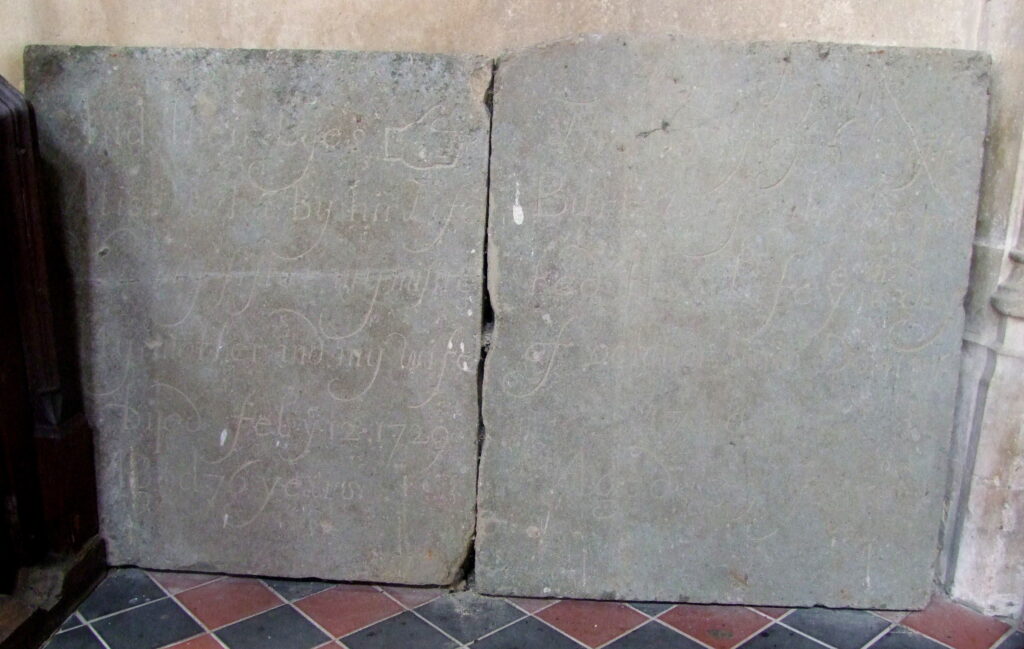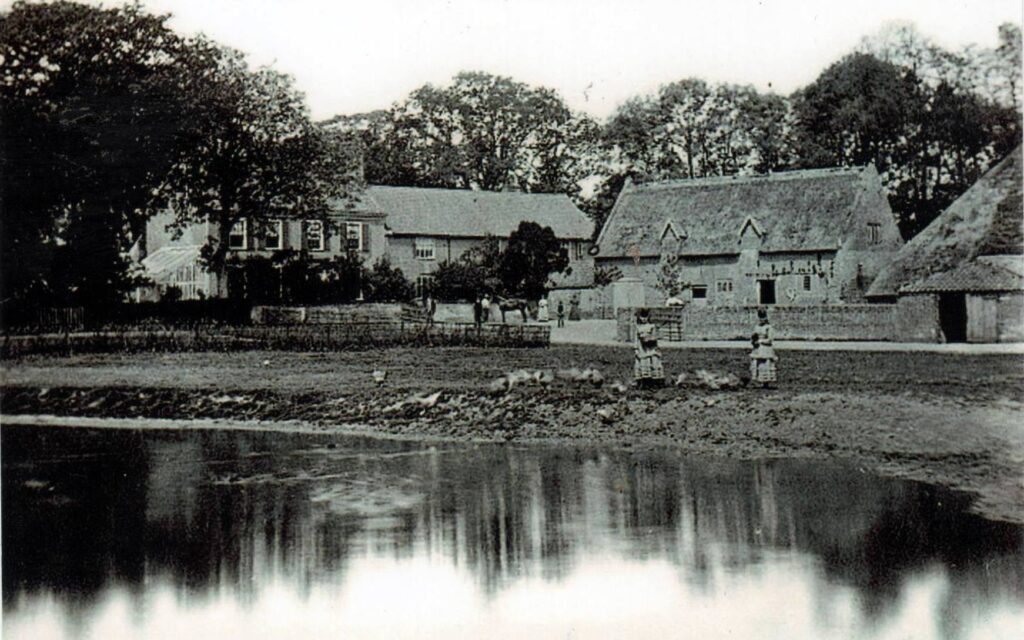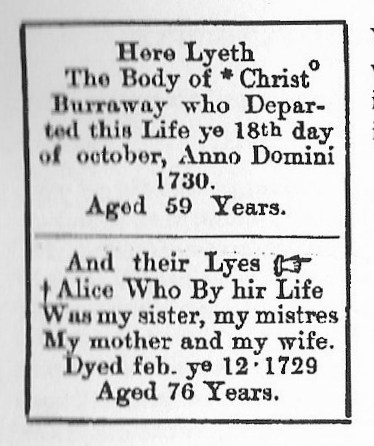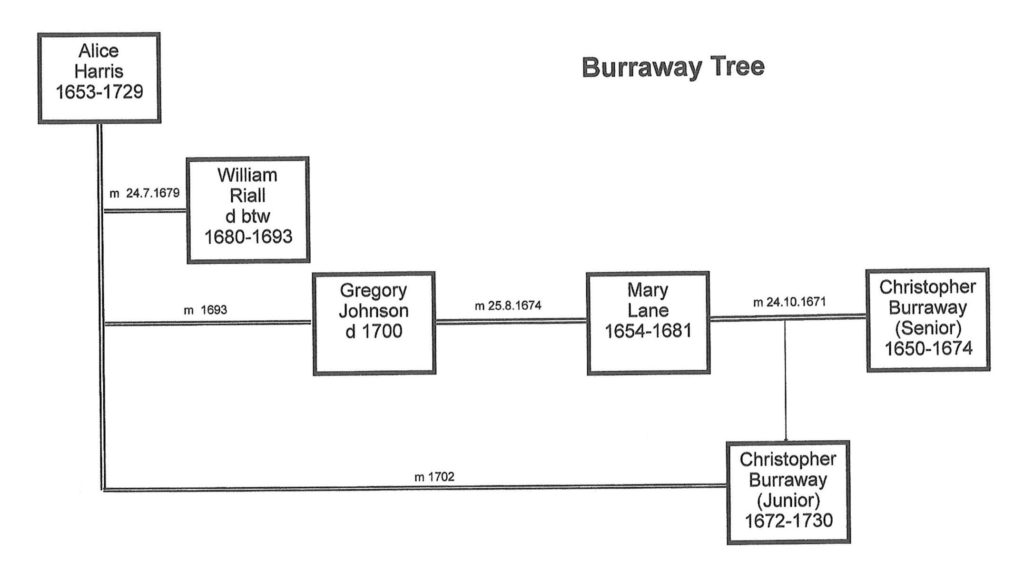The Strange Story of Christopher Burraway of Martham, (1672-1730)

It is not easy to condense the story of Christopher and Alice Burraway, or to state with conviction the true circumstances of their relationship and the events of their pasts. It is true that both died in the 18th century, and they were victims of two unfortunate coincidences which, over time, resulted in the following inscription ultimately appearing on Christopher Burraway’s tombstone at St Mary the Virgin Church in Martham.
“And there lyes Alice, who by hir Life was my Sister, my Mistres, My Mother, and my Wife.”
Alice was the teenage daughter of a local landowner, if not Lord of The Manor no less, who abandoned her new born baby son on the steps of Norwich Cathedral. She did so in an attempt to hide the disgrace of having had an incestuous encounter with her father, the outcome of which was a baby boy which no one wanted. The baby, who had been removed from Martham Hall and ultimately placed in a foundling hospital, grew to be healthy and handsome but with one unique feature – he had a large mole under his left shoulder blade.
This young lad grew up well away from the village and eventually became a farm labourer, an occupation that, in time, would not satisfy his personal and social needs. So, rather than settle for that which had been handed to him by well-meaning guardians, he ‘packed his bags’ and to seek opportunities elsewhere. Eventually, and by shear chance, Christopher Burraway, for that was his name came to Martham.
It was said that Alice’s continued to live at Martham Hall with her previously incestuous father, their relationship having resettled at a normal paternal/daughter level. This, of course, is an assumption, but one which finds comfort in the subsequent efforts of Alice’s father to nurture her ability to eventually run his estate. Indeed, this was to come about from the moment her father died, he leaving everything to Alice.

It was certainly a coincidence when this Christopher, a farm labourer seeking work, turned up at Martham Hall and spoke to Alice, a landowner requiring extra hands. It was a ‘win win’ situation for both with Christopher proving so industrious and efficient that Alice was to promote him as steward of the property and then, a little later, accept his advances and making him her husband – perhaps more of a business arrangement than a romance when one considers the age gap. Certainly, after their marriage he very quickly became a figure of importance in the parish, but there would never be any clear indication that any children resulted, despite 20 years under the same roof.
It was said, with some justification, that Alice had never seen her husband other than when he was fully dressed. So it came as something of a shock to her when, one morning as he was changing clothes, she inadvertently entered his bedroom and saw a peculiar and recognisable mole on his left shoulder. She immediately recognised him as her son and fainted with shock – and possibly horror born out of a terrible memory. She did recover for a while at least, during when she tried to explain matters to him. He, in turn, found out how complicated their lives and relationship had become. It was too much for both of them; Alice soon relapsed and died without leaving his chamber; Christopher died the following year from the equally horrible realisation.
It seems an incredible story, it could have happened – but did it? Either way, it still remains a source of great interest whenever the story is told!
Martham suddenly started to attract visitors from far and wide in the 1970’s as the result of the publication of a curio that had existed since 1851 when first published in the Journal Notes and Queries. It reported on the following inscription on the tombstone of Christopher Burraway who died in 1730:

At the time, the explanation given for the enigmatic statement was that Christopher Burraway was the outcome of an incestuous relationship between a father and daughter and as a baby was placed in the Foundling Hospital. When he came of age he arrived, by chance, in Martham and was hired, unwittingly, by his own mother as a farm steward, her father (or rather the father of both of them) having died. His work was more than satisfactory to his employer (mistress) to such an extent that she married him thus becoming his, mother, sister, mistress and wife. Being discovered by his wife to be her son, by a distinctive birth mark on his shoulder, she was so horror-stricken that she died.
The story was published on little cards that were available in St Mary’s and word spread resulting in many people visiting the church to see Christopher’s gravestone which was once under the tower but now stands on the south wall inside the church.
The tale may have been embellished over time and a little research shows there is very little foundation for the story although some elements stand up . The facts are:-
- Christopher Burraway (Jnr) was the son of Christopher Burraway (Snr) and Mary, nee Lane. He was born in 1672 at Potter Heigham where he was baptised on 11th August 1672 (that confirms who his parents actually were).
- His mother Mary had married his father, Christopher, on 24th October 1671 at Potter Heigham.
- His father died before 1674 and his mother married Gregory Johnson on 25th August 1674 at *St Mary in the Marsh, Norwich.
- Gregory Johnson was also the second husband of Alice Harris who he had married in 1693 at St Mary the Virgin, Martham. Gregory died in 1700.
- Alice Harris was married three times; first, to William Riall at *St Mary in the Marsh, Norwich on 24th July 1679. Second, to Gregory Johnson in 1693 at St Mary the Virgin and thirdly, to Christopher Burraway (Jnr) in 1702 at St Mary in the Marsh , Norwich*.
This may be easier to follow using this tree:

Christopher (Jnr.) was a respectably member of Martham society and a churchwarden. His name is on one of the church bells which he probably paid for.
*St Mary in the Marsh is an Ancient Parish in the city and Diocese of Norfolk. The parish was the parish for Norwich Cathedral Close and was enclosed within the gated precinct of the Cathedral.
My thanks to Haydn Brown of “Norfolk Tales, Myths & More!” for help with the narrative if this page.